Defined contribution pensions explained
Defined contribution pensions pay out based on how much is paid in, plus government contributions and any investment growth.

What is a defined contribution pension scheme?
Defined contribution (DC) pension schemes, also known as money purchase schemes, are the most common type of workplace and personal pension.
A DC pension is built up through a combination of personal contributions, tax relief and employer contributions. These contributions are invested, with a view to growing the pension pot over time.
Unlike defined benefit schemes which provide a salary-based annual income in retirement, a DC pension provides a pot of money for your retirement.
This means you can choose how to use the sum of money you have accumulated when you retire. You can opt to withdraw this flexibly via drawdown or look at other options that are available to you at that point.
How does a defined contribution pension scheme work?
If you’re in a workplace scheme, your employer will deduct your contributions from your salary before tax. You can arrange your own contributions if you have a personal pension. Any contributions you make are topped up with 20% tax relief by the government.
Employers are also required to contribute to your pension. As of 2024/25, they must contribute an amount equivalent to at least 3% of your salary.
The total amount of money you build up for retirement depends on:
- The amount of money you contribute
- The length of time you have been contributing for
- How much your employer contributes
- How well your investments perform over time
What happens to my defined contribution pension when I retire?
When you retire, there are a number of options available, such as:
- Taking up to 25% of your pension as tax-free cash (subject to a maximum of £268,275) and moving the rest into drawdown.
- Taking up to 25% of your pension as tax-free cash (subject to a maximum of £268,275) and buying an annuity with the remaining money.
- Taking out lump sums (UFPLS) when you need them. When you withdraw a lump sum, 25% is tax-free (subject to a maximum of £268,275) and 75% is taxed as income.
- You can take up to 100% of the value of your pension as a lump sum, but large withdrawals will be heavily taxed.
Drawdown allows you to keep your money invested while making withdrawals when you wish to. An annuity provides a guaranteed income in retirement in exchange for some or all of your pension pot. Whatever option you choose, you can take 25% of your pension as tax-free cash (subject to a maximum of £268,275).
Defined contribution pensions are flexible. You could choose to take a combination of each of the options above at different stages in retirement. For example, some people have a small annuity with the rest of their pension pot invested in a drawdown scheme.
What happens to the contributions I make?
Normally, pension contributions are invested in funds. Pension funds typically invest in a range of assets including shares, bonds and cash.
Although DC pension schemes often offer a number of funds, historically most people would choose to use their provider’s ‘default fund’. These funds typically feature a limited range of investments.
If you have a personal pension, such as a SIPP, you have the option to choose your own investments and level of risk. With a SIPP, you can personally select your investments and choose from a wider range of funds and investment options. It is important to note that the investments in your DC pension can go down as well as up.
What happens to my defined contribution pension when I switch jobs?
When you switch jobs, your workplace pension scheme remains intact and stays invested. However, it is likely you will no longer be making contributions. You can transfer your pot to another pension scheme including a SIPP if you wish to consolidate your pensions.
Typically, transferring your DC pension to a new provider is straightforward as they will arrange the transfer for you. However, you should check whether your current provider charges exit fees before transferring.
Since 2012 employers have been required by law to auto-enrol employees into pension schemes. If you’ve had more than one job in your lifetime, it is likely you will have more than one pension scheme. You can use the government’s pension tracing service to help locate lost pension schemes.
How to plan for retirement if you have a defined contribution pension scheme
How much will I need when I retire?
The amount you need in your DC pension pot when you retire will depend on the kind of lifestyle you expect to lead.
For example, you may reduce your spending in retirement if you have paid off your mortgage and no longer have work-related expenses (e.g. the cost of commuting). However, you might wish to spend more if you want to use your free time for holidays or hobbies.
Generally, it is advisable to maximise your pension income by starting to contribute as early as possible.
How much income will I get when I retire?
The amount of income you receive in retirement depends on the amount you have contributed and how well your investments have performed. It is also likely you will have some income from the state pension as well as your workplace or personal pension.
If you want to calculate your own pension finances, our pension calculator can help.
Defined contribution pension FAQs
Please remember, SIPPs are aimed at people happy to make their own investment decisions. Investment value can go up or down and you could get back less than you invest. You can normally only access the money from age 55 (57 from 2028). We recommend seeking advice from a suitably qualified financial advisor before making any decisions. Pension and tax rules depend on your circumstances and may change in future.